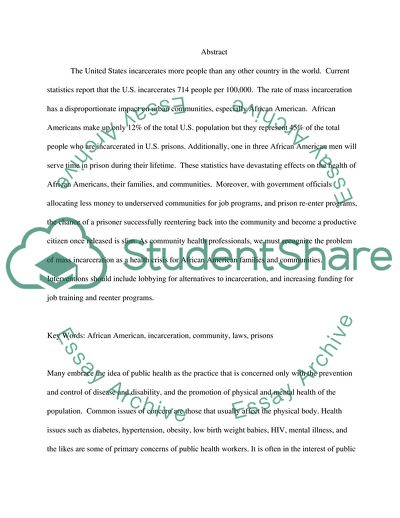Cite this document
(Incarceration of African Americans: A Public Health Crisis Coursework, n.d.)
Incarceration of African Americans: A Public Health Crisis Coursework. https://studentshare.org/social-science/1709711-incarceration-of-african-americans-a-public-health-crisis
Incarceration of African Americans: A Public Health Crisis Coursework. https://studentshare.org/social-science/1709711-incarceration-of-african-americans-a-public-health-crisis
(Incarceration of African Americans: A Public Health Crisis Coursework)
Incarceration of African Americans: A Public Health Crisis Coursework. https://studentshare.org/social-science/1709711-incarceration-of-african-americans-a-public-health-crisis.
Incarceration of African Americans: A Public Health Crisis Coursework. https://studentshare.org/social-science/1709711-incarceration-of-african-americans-a-public-health-crisis.
“Incarceration of African Americans: A Public Health Crisis Coursework”. https://studentshare.org/social-science/1709711-incarceration-of-african-americans-a-public-health-crisis.


